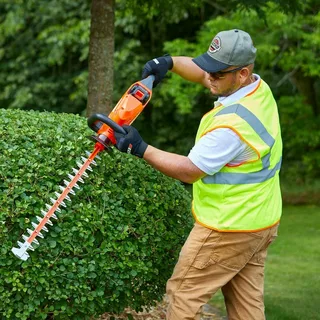Keeping your garden tidy and your hedges looking sharp requires more than just owning a hedge trimmer — it takes regular care and maintenance. This Hedge Trimmers Maintenance Guide: Keep Your Tool Sharp and Efficient will help you extend the lifespan of your equipment, improve performance, and ensure safety during every use.
Why Maintenance Matters
Hedge trimmers, whether electric, battery-powered, or gas-operated, are powerful tools designed for precision cutting. Over time, exposure to sap, moisture, and dirt can dull the blades and affect motor performance. Without proper care, your hedge trimmer could become less efficient or even dangerous to operate.
Pre-Maintenance Safety Tips
Before performing any maintenance, always:
- Disconnect the power source (unplug or remove the battery).
- Wear protective gloves to avoid injury.
- Place the trimmer on a flat, stable surface.
Cleaning the Blades
Regular cleaning is essential to keep your trimmer sharp and effective. After each use:
- Remove any stuck-on debris or sap with a soft brush or cloth.
- Use a cleaning solvent (like rubbing alcohol or a designated cleaner) to remove sticky residue.
- Wipe the blades dry to prevent rust.
Sharpening the Blades
A dull blade tears rather than cuts, which can damage plants and strain the motor.
- Use a flat file, sharpening stone, or rotary tool.
- Follow the angle of the blade edge, filing in one direction.
- Wipe the blade clean after sharpening and apply a light coat of lubricating oil.
For optimal performance, sharpen your blades every 25 hours of use or whenever you notice uneven or sluggish cutting.
Lubricating Moving Parts
Friction between moving parts can cause premature wear. Regular lubrication will:
- Reduce resistance
- Prevent rust
- Extend the tool’s life
Apply a light machine oil or trimmer-specific lubricant along the blades and joints after every cleaning.
Inspecting the Power Source
Depending on your model:
- Electric Trimmers: Check the power cord for frays or cuts.
- Battery Trimmers: Ensure batteries are fully charged and not swollen or leaking.
- Gas Trimmers: Check the fuel lines and clean or replace the air filter regularly.
Storing Your Hedge Trimmer
Proper storage protects your trimmer and ensures it’s ready for the next use:
- Store in a dry place away from direct sunlight.
- Use blade covers to prevent accidents and blade damage.
- Hang or place the trimmer securely to avoid falls.
When to Call a Professional
If you notice smoke, excessive noise, or your hedge trimmer won’t start even after basic troubleshooting, consult a professional technician. Regular professional servicing can also help maintain the tool’s long-term health.
Conclusion
By following this Hedge Trimmers Maintenance Guide: Keep Your Tool Sharp and Efficient, you ensure your hedge trimmer remains a reliable partner in your gardening tasks. Regular cleaning, sharpening, and proper storage are small efforts that lead to big benefits. Keep your tool in top shape — your hedges will thank you!


